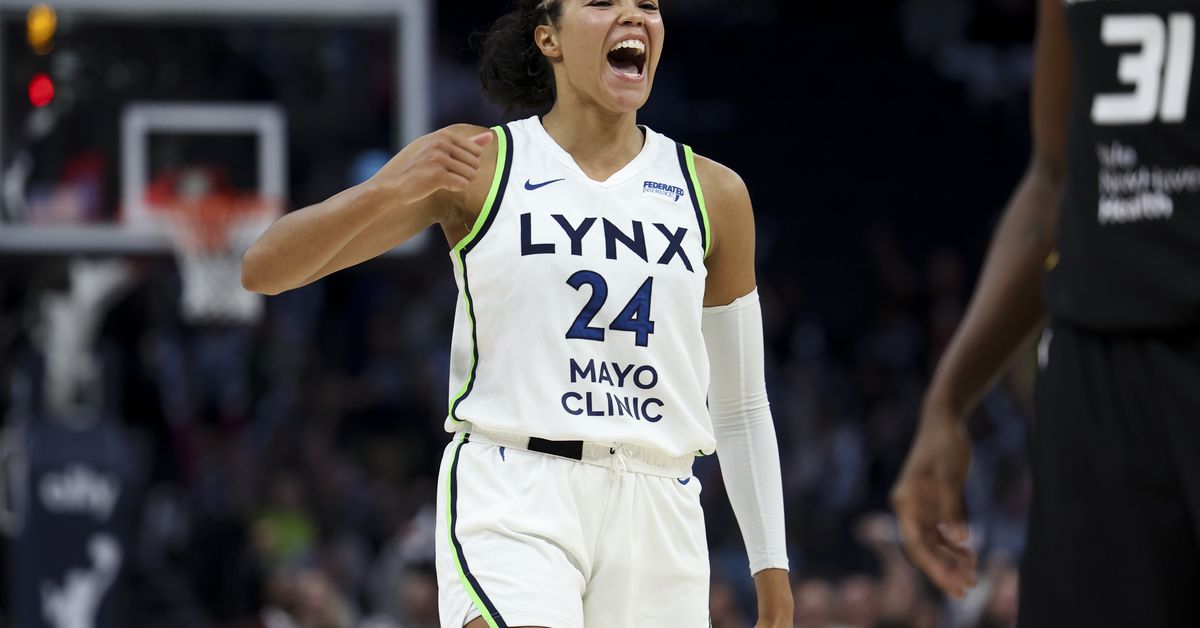With the first couple weeks of the WNBA season now complete, several standout performances and emerging trends have captured attention across the league.
[embedded content]
From individual breakout campaigns to strategic innovations, here are the five biggest takeaways from the season’s opening stretch:
Napheesa Collier’s MVP-caliber leap
Minnesota Lynx forward Napheesa Collier has elevated her game to another level, building on what was already an exceptional 2024 campaign. The most noticeable improvement in Collier’s arsenal has been her 3-point shooting, particularly on catch-and-shoot opportunities where she’s converting at an impressive 50 percent clip. This dramatic improvement from last year has forced opposing defenses to completely reconsider their game plans.
Teams that once conceded these perimeter looks to Collier are now paying dearly for that strategy. Her improved outside shooting has opened up deadly pick-and-roll chemistry with guard Courtney Williams, creating one of the most potent two-woman games in the association. However, the most significant development in Collier’s evolution has been her cutting ability and court awareness.
Her timing on backdoor cuts and angle cuts has become practically perfect, showing an enhanced basketball IQ that allows her to read defensive lapses and exploit them instantly. Whether it’s recognizing when a play has broken down and timing a backdoor cut from the perimeter or using misdirection to fool help defenders, Collier’s movement within Minnesota’s motion offense has been outstanding. This enhanced feel for the game, combined with her historic scoring efficiency to start the season, has positioned her as a legitimate MVP candidate.
Collier is currently averaging just under 27 points on 50-40-90 shooting, which would make her the second player in league history to accomplish such a feat.
Jessica Shepard’s 6POY impact
After missing the entire 2024 season while playing overseas, center Jessica Shepard has returned to make an immediate impact for Minnesota, emerging as an early frontrunner for Sixth Player of the Year honors. Currently averaging 10.5 points and 8.5 rebounds off the bench, Shepard brings a unique skill set that perfectly complements head coach Cheryl Reeve’s system.
Shepard’s versatility allows Minnesota to play triple big lineups alongside Collier and Alanna Smith without sacrificing offensive spacing or defensive mobility, making her one of the league’s most valuable bench contributors.
What sets Shepard apart from typical centers is her ball-handling ability and mobility on both ends of the floor. Her capacity to put the ball on the floor and extend possessions has been invaluable for the Lynx, allowing them to deploy versatile lineups that incorporate both size and movement. Her 67 percent finishing at the rim and 64 percent outside of three feet exemplify the value of being a good finisher in a motion-heavy offense.
On defense, her weakside rotations and shot-blocking presence have provided crucial rim protection, while her passing ability from the post and in transition keeps Minnesota’s offense flowing smoothly.
Brittney Sykes’ unprecedented free throw rate
Washington Mystics guard Brittney Sykes has taken driving to the basket to an entirely new level, averaging a league-leading 12 free throw attempts per game through the season’s first five contests. This mark is the highest free throw rate for any player through the opening five games in recent WNBA history.
While this torrid pace is unlikely to be sustainable over a full season, Sykes’ ability to attack the rim with relentless aggression has been a revelation for Washington’s struggling offense. Her secret lies in her approach to contact and her exceptional ball security. Sykes consistently gets lower than defenders’ hip levels, allowing her to power through contact while protecting the basketball like a running back.
Her handle and change-of-direction ability consistently discombobulate point-of-attack defenders, while her decision-making when help defense arrives has been exemplary. When teams collapse on her drives, she consistently finds open teammates on the perimeter. This combination of individual aggression and team-first playmaking has made her one of the league’s most dangerous slashers.
Natasha Cloud’s two-way excellence
The New York Liberty’s offseason acquisition of guard Natasha Cloud has proven to be the most impactful roster move of the season. Despite joining an already talent-laden roster, Cloud’s cerebral approach and defensive prowess have elevated the Liberty to the league’s top-ranked offense.
Perhaps most surprisingly, Cloud is shooting 50 percent from 3-point range, a career-best mark that has opposing defenses scrambling to adjust their coverages. While this percentage will likely regress as the season progresses, her improved shooting has unlocked new dimensions for New York’s offense.
Cloud’s court mapping and anticipation skills make her an elite connective passer, consistently finding teammates in advantageous positions through quick reads and precise timing. This is a big reason why she’s averaging a career high 7.7 assists to only 2.3 turnovers per game.
On defense, her hand-eye coordination and anticipation allow her to disrupt passing lanes and execute timely peel switches, including in clutch situations. Cloud was the main reason why Caitlin Clark was held to only 6-for-18 shooting and a whopping 10 turnovers in their Saturday matchup. Her versatility in New York’s zone defense schemes has been particularly valuable, as she can effectively operate from multiple positions within the defensive alignment, making her one of the most valuable contributors in the league already.
Golden State’s defensive innovation
First-year head coach Natalie Nakase has the expansion Golden State Valkyries playing zone defense at more than double the rate of any other team in the league, and the results have been remarkable. Despite being constructed primarily from other teams’ surplus players, the Valkyries boast a top-four defensive rating through the early season.
Their zone defense features unique rotations where corner defenders play high and adjust their alignment based on ball movement. This system creates multiple help-and-recover principles that make penetration extremely difficult for opposing offenses. The Valkyries lead the league in steals, largely due to their active hands and superb reflexes that consistently disrupt passing lanes.
By effectively taking away middle penetration and rotating as a cohesive unit, Golden State has created one of the most disruptive zone defenses seen in recent years, proving that strong defensive schemes can overcome talent disparities at the professional level.




